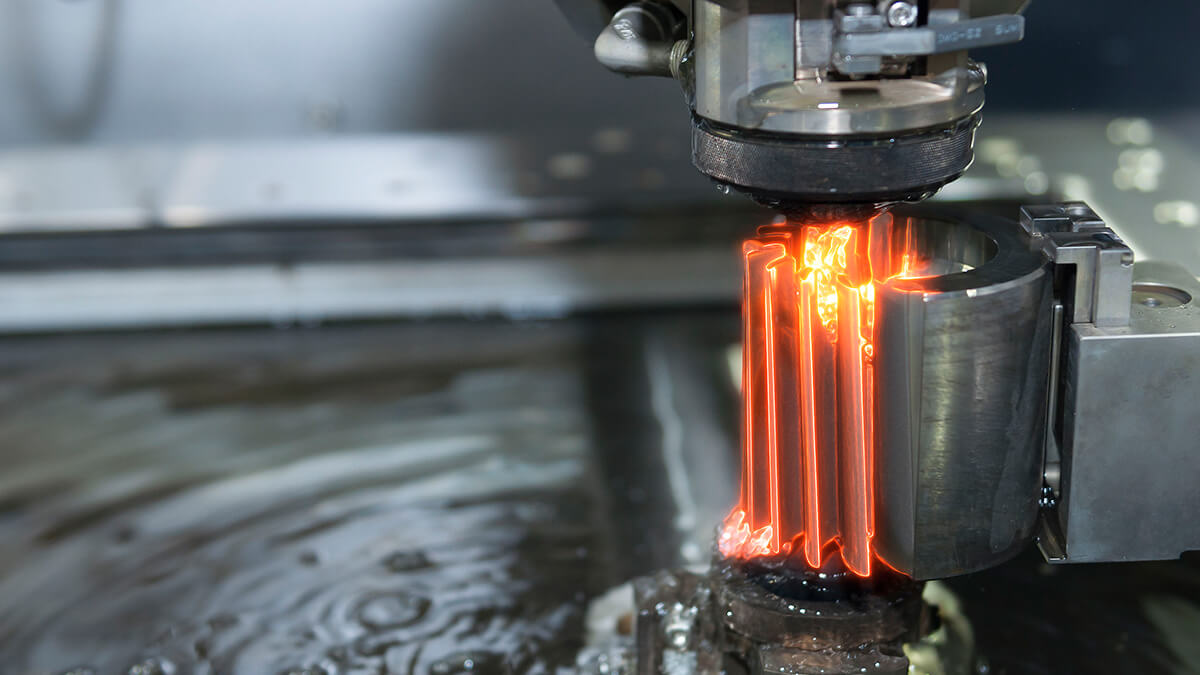Additive manufacturing, commonly known as 3D printing, allows for the creation of complex and intricate components layer by layer. However, certain designs may pose challenges during the printing process, especially when overhangs or delicate features are involved. Support structures act as scaffolding, providing stability to ensure that the printed material adheres correctly and maintains structural integrity. Electrical Discharge Machining (EDM) and Additive Manufacturing (AM) has given rise to a fascinating synergy in the creation of support structures for additive manufacturing processes.
The Role of Support Structures in Additive Manufacturing
To understand the capabilities of EDM and its synergy with additive manufacturing, it is important to recognize the importance of support structures in this innovative process.
Structural Integrity: During the additive manufacturing process, support structures provide stability, ensuring the proper adherence of the printed material and maintaining structural integrity. They prevent deformities and misalignments that could arise due to gravitational forces or material sagging, contributing to the overall uniformity and integrity of the printed component.
Material Support: In cases where materials are prone to deformation or sagging during the printing process, support structures play a crucial role in holding up these areas until the entire component is fully formed. This ensures the accurate and faithful reproduction of the intended design.
Post-Processing Accessibility: Once the additive manufacturing process is complete, support structures become essential for ease of post-processing. They enable efficient removal of excess material and facilitate the finishing touches required to achieve the desired surface quality of the printed component.
Challenges in Creating Support Structures for Complex Geometries
While support structures are indispensable for successful additive manufacturing, creating them for complex geometries presents a set of unique challenges.
Overhangs and Bridging: Overhanging features, such as intricate arches or bridges, can be challenging to print without proper support. Support structures must be strategically placed to prevent sagging or collapsing during the printing process.
Delicate Features: Intricate and delicate features, such as thin walls or fine details, require precise support to prevent distortion or breakage. Balancing the need for support with the preservation of intricate details poses a delicate challenge.
Optimization of Material Usage: Designing efficient support structures involves striking a balance between providing adequate support and minimizing the consumption of additional printing material. Optimizing material usage is crucial for cost-effectiveness and sustainability.
EDM techniques for Precise Support Structure Fabrication
EDM's unique precision machining capabilities, which address the extreme challenges of creating intricate support structures for additive manufacturing, include:
Wire EDM for Complex Shapes: Wire EDM, a technique that uses a thin, electrically charged wire to cut through materials, is well-suited for creating precise and intricate support structures. Its non-contact nature allows for the fabrication of complex shapes without compromising the structural integrity of the support.
Sinker EDM for Delicate Features: Sinker EDM, also known as die sinking or cavity-type EDM, excels in crafting detailed and delicate features. Sinker EDM offers high precision, allowing for the creation of tailored supports that cater to the specific needs of the 3D-printed components with intricate geometries.
High-Speed EDM Drilling: EDM drilling, with its ability to create precise holes, is valuable for creating perforated support structures. High-speed EDM drilling techniques contribute to the efficient and accurate fabrication of support structures with intricate cavities and perforations.
Case Studies Demonstrating Successful EDM-Assisted Additive Manufacturing
Real-world examples demonstrate how EDM has successfully collaborated with additive manufacturing to produce intricate support structures across various industries.
Aerospace: In the aerospace industry, EDM-assisted additive manufacturing has been employed to create intricate support structures for aircraft components. Wire EDM, in particular, has played a pivotal role in crafting precise supports for overhanging features and complex shapes.
Medical Devices: Additive manufacturing has revolutionized the production of customized medical implants ensuring the accurate reproduction of intricate designs while maintaining the structural integrity required for medical applications.
Automotive Prototyping: The automotive industry often requires rapid prototyping of complex components. EDM-assisted additive manufacturing enables the development and testing of intricate designs in a time-efficient manner.
Future Trends in the Integration of EDM and 3D Printing Technologies
The integration of EDM and 3D printing technologies is poised for exciting advancements. Future trends suggest a deepening collaboration that goes beyond support structures.
Hybrid Machines: Hybrid machines that seamlessly integrate EDM and 3D printing capabilities are on the horizon. These machines will enable manufacturers to transition seamlessly between the precision of EDM and the layer-by-layer additive manufacturing process, offering unprecedented flexibility in production.
On-Site Machining: Future trends point towards on-site machining, where EDM is performed within the 3D printing chamber. This allows for real-time adjustments and modifications to support structures during the additive manufacturing process, enhancing efficiency and precision.
Smart Algorithms and AI: The application of smart algorithms and artificial intelligence (AI) in the collaboration between EDM and 3D printing is promising. These technologies can analyze complex geometries in real-time, optimizing support structure designs and placement for enhanced efficiency.







.png)






